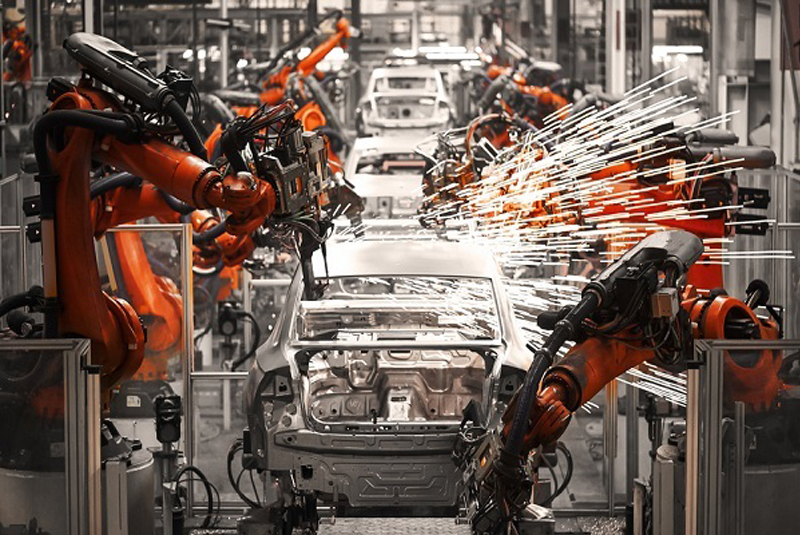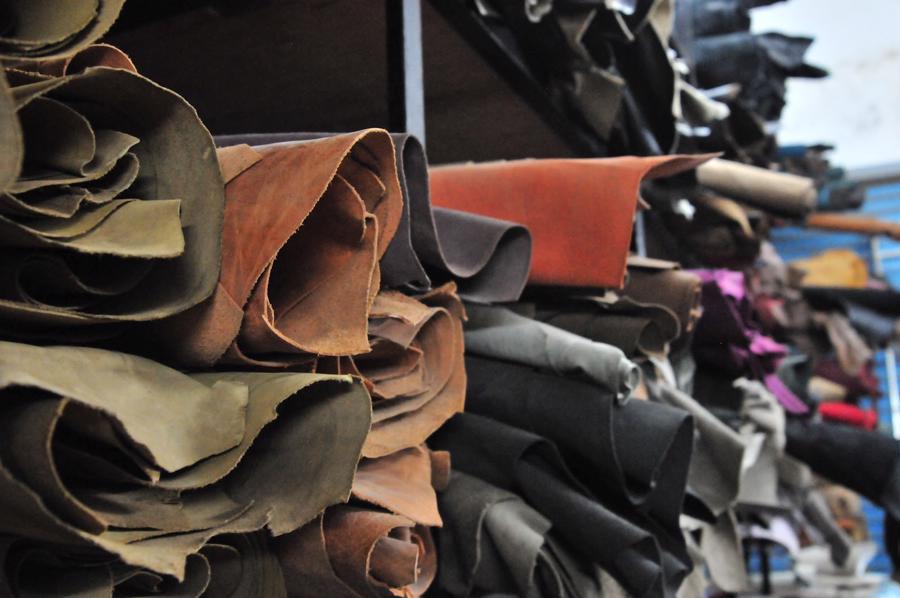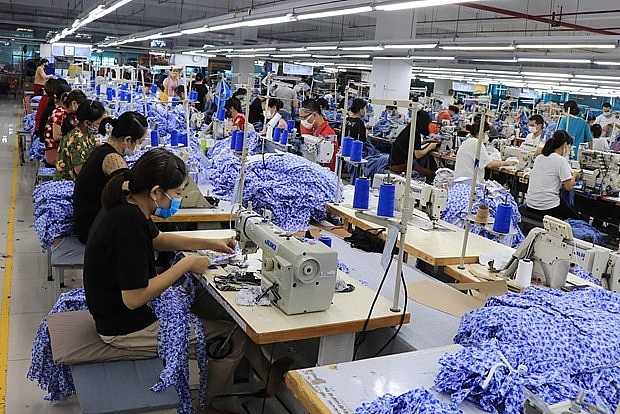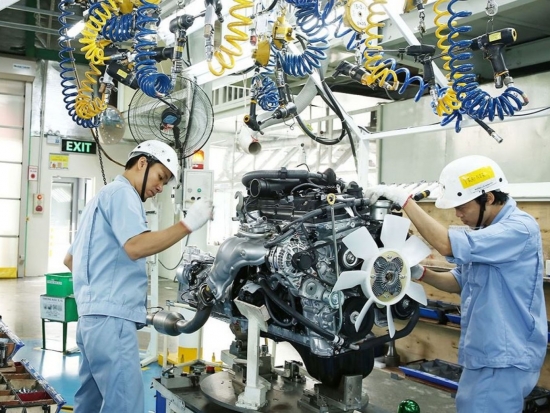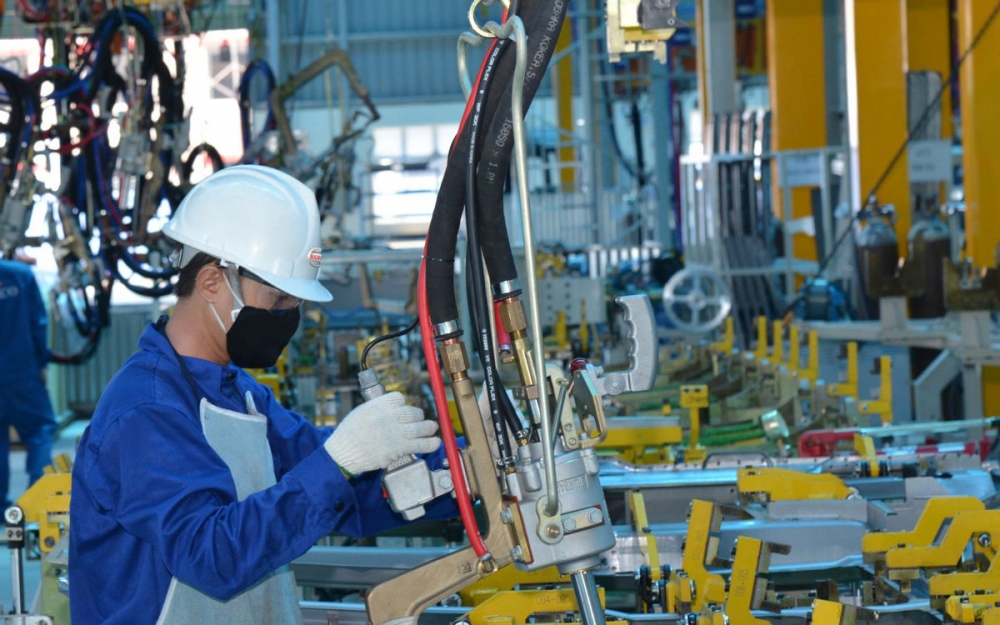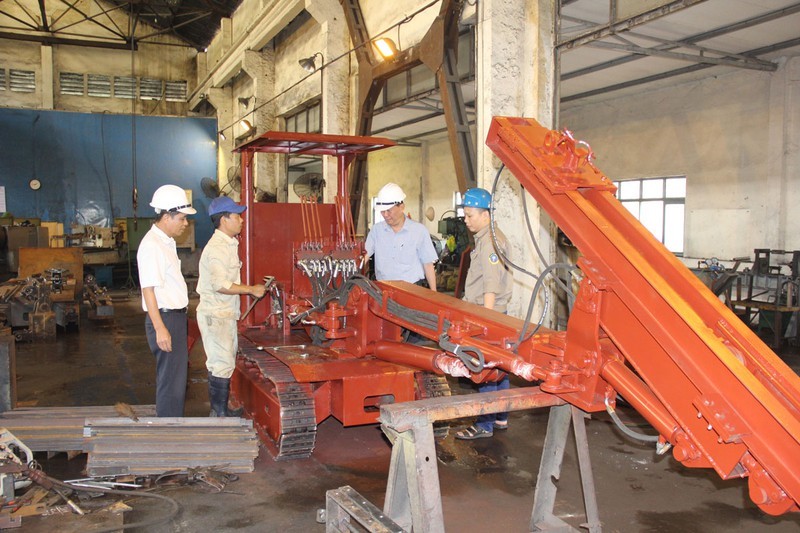The ‘Big Man’ Moves Production To Vietnam
11/01/2022Nike, Adidas, Foxconn, Intel, Samsung… have been expanding their presence in Vietnam, showing that the business and investment environment is still stable and has good growth potential.
51% of Nike shoes are “Made in Vietnam”
Recently, CNBC quoted the financial report of Nike, a corporation specializing in sports products, saying that in 2021, Vietnam’s shoe production for Nike will account for 51% of its global output, while this proportion is in China. dropped to 21%. In 2006, China made Nike shoes for 35% of its global production. Thus, Vietnam has officially surpassed China, becoming the main production base for this brand. Notably, even Indonesia has overtaken China as the market share of Nike shoe production in the country increased from 21% to 26% in the past 15 years.
Chinese media reported that Nike is not the only company with a large number of products manufactured in Vietnam. Even its rival, Adidas, is moving in a similar direction, with 40% of its footwear produced in Vietnam. In fact, by the end of 2021, Nike factories in Vietnam have returned to normal operations after being affected by the Covid-19 pandemic. Nike’s leaders in Vietnam also said that with the strategy of safe living with the disease and high vaccine coverage in Vietnam, the company still believes and is optimistic with the supply chain is no longer interrupted.
Foreign enterprises increase production investment in Vietnam
It is estimated that Nike branded products are supplied by 191 manufacturing plants located in 14 countries around the globe. In which, most of the footwear products are manufactured outside the United States. Nike’s production data by the end of August 2021 shows that there are 138 manufacturers and suppliers of this company located in Vietnam. The structure focuses on three main products including apparel, equipment, and footwear. These factories have a total of nearly 484,000 employees, concentrated mainly in the south, and most of them are large-scale foreign-invested enterprises (FDI) in the garment and footwear industry of Vietnam.
A representative of a leather and footwear enterprise said that Vietnam can attract Nike or Adidas and orders are increasing mainly due to abundant labor resources, high and stable skills, ensuring product quality as required. demand from partners. At the same time, labor and production costs are still lower than China. Not to mention that China is still applying the “Zero Covid” policy, causing manufacturing corporations to fear that the supply chain will be disrupted by strict measures to prevent the epidemic.
Many corporations boost production in Vietnam
In fact, not only Nike or Adidas have expanded their operations in Vietnam, but in the past 2 years, many FDI enterprises have moved production or expanded investment to Vietnam. Right from the beginning of 2021, Foxconn Technology Group (Taiwan), the world’s largest contract electronics manufacturer, entered Bac Giang province with the Fukang Technology factory project. This project specializes in manufacturing tablets and laptops with a capacity of about 8 million products/year, with a total registered investment capital of 270 million USD. Previously, all iPad products were assembled in China, and so Foxconn’s move marks the first time that iPads are manufactured outside of China, to Vietnam at Apple’s request. Previously, by the end of 2020, this group had invested 1.5 billion USD in Vietnam and employed 53,000 employees. In 2021, Foxconn expands to recruit 10,000 more workers in Vietnam and invests an additional 700 million USD. Rivals of this enterprise such as Pegatron and Wistron also decided to expand production in Vietnam. Specifically, in September 2020, Pegatron invested 1 billion USD in an electronic equipment manufacturing facility in Hai Phong.
In fact, more and more multinational enterprises are looking to build production bases in Vietnam. Some even think that Vietnam is like a “rising star” of supply chains in the Asia-Pacific region.
Similarly, the market has witnessed a wave of movement of Hanwa (Korea) in the production of aircraft spare parts that have moved to Hanoi; Yokowo (Japan) for the production of equipment on motor vehicles has been relocated to Ha Nam; Huafu (China) for textiles has relocated to Long An… At the same time, some information shows that many other corporations such as Sharp, Nintendo and Komatsu from Japan, Lenovo from Hong Kong have announced plans to move to or expanding production in Vietnam… Or in 2021, the most notable foreign investment project in Vietnam with the most notable expansion is LG (Korea) pouring an additional 1.4 billion USD, bringing the total investment capital in Vietnam. Hai Phong to $4.65 billion, becoming the largest FDI project in this locality.
Sheet Financial Times Assuming that this trend will continue to be more popular, in fact, more and more multinational enterprises are looking to build production bases in Vietnam. Some even think that Vietnam is like a “rising star” of supply chains in the Asia-Pacific region. According to the World Bank (WB), the Covid-19 epidemic is still very complicated, but FDI attraction to Vietnam is still increasing, proving that foreign investors continue to maintain trust in Vietnam.
Welcoming the wave of billions of dollars
According to Prof. Dr. Nguyen Mai, Chairman of the Association of Foreign-Invested Enterprises in Vietnam, in fact, the expansion scale of FDI projects in general is not as significant as expected. However, the important trips of senior leaders of the Government and State in the past year have opened the door to important ideas, projects, cooperation and agreements. Those are the cooperation agreements of foreign investors worth 3.2 billion USD to make offshore wind power in Hai Phong, 5 billion USD project to build gas power in the Central region… He predicts that there will be a wave in 2022. new, large investment from abroad into Vietnam. It is noteworthy that in the past, foreign investors in Vietnam mostly came from Singapore, Japan, Korea, Hong Kong… in the new trend, Vietnam will have large investors from Europe and Americas. This wave has an important part coming from the trips of heads of state, another part is the inevitable effect from exploiting free trade agreements (FTAs), especially the EVFTA that took effect recently. 2 years. Regarding the investment wave from the US, the new term of the US ambassador has many remarkable messages and can also be considered as the direction of US investment in Vietnam in the coming time, focusing on transformation. digital, digital technology…
Prof. Dr. Nguyen Mai emphasized: Most importantly, provinces, cities, and management boards of industrial parks – export processing zones have been decentralized, taking Resolution 50 of the Politburo as a guideline to attract investors. private. With large projects, it is necessary to be very cautious but implement it in the spirit of reform, avoiding competition because of preferential treatment over the level, beyond the framework. One detail to note is that the National Assembly and the Government are having an extraordinary session. This is the first extraordinary meeting in the first month of the year that the National Assembly and the Government hold to amend 8 laws, including important laws such as the Law on Enterprises, the Law on Investment, the Law on Electricity, the Law on Bidding. , Law on Value Added Tax… The goal is to avoid overlapping laws, circular “kick” decree, decree “kick” law. This shows that leaders at all levels have listened to and responded to the aspirations of the people, businesses, and investors and must amend them soon to adapt and develop… Since then, the law requires strict enforcement from the outset. central to local, there are no incentives outside of authority.
More reform is needed to welcome the eagle. In fact, many reflections from domestic and foreign investors still believe that localities still “lay” many cumbersome procedures, causing difficulties, disadvantages and losing enthusiasm of investors.
Source: VOV
Must Read
2023 PARTICIPANT LIST

[Seminar] INDUSTRIAL METROLOGY

MTA Vietnam 2022 Webinar

ADB is optimistic about Vietnam’s economy

MTA Vietnam 2021 x Bystronic Webinar

CONFERENCE SERIES

ONLINE BUSINESS MATCHING PROGRAMMES
You may be interested in


REPORT ON THE PRODUCTION AND BUSINESS TRENDS OF THE PROCESSING, MANUFACTURING INDUSTRIES IN THE FIRST QUARTER OF 2024 AND FORECAST FOR THE SECOND QUARTER OF 2024

Industrial production in the first two months of the year increased by 5.7% compared to the same period

Việt Nam có thể trở thành ‘con rồng AI’

Vietnam is ready to welcome the wave of investment in smart manufacturing chains.

Humanoid robot converses with OpenAI language AI

Boeing supplier greenlighted to build $20M plant in Vietnam
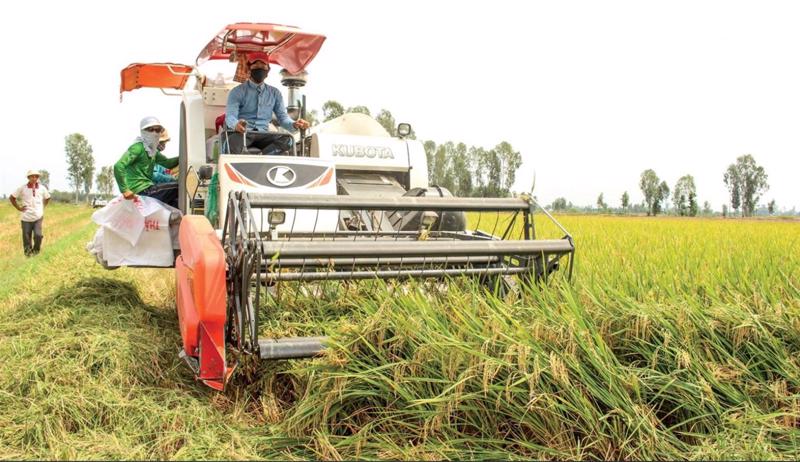
Vietnam is a potential market for companies engaged in the manufacturing of agricultural machinery and equipment

‘The Giant’ Goertek is expected to invest over 6,800 billion VND in Vietnam to expand production. Which locality will be chosen?



